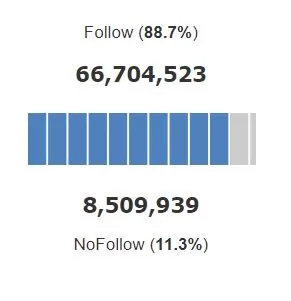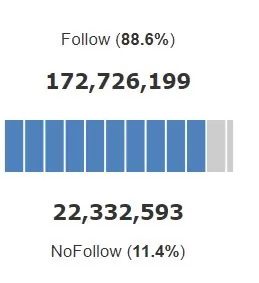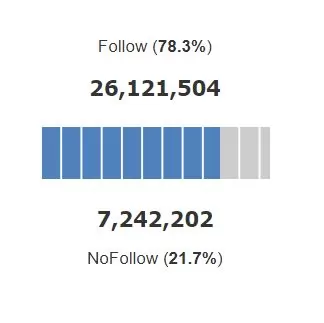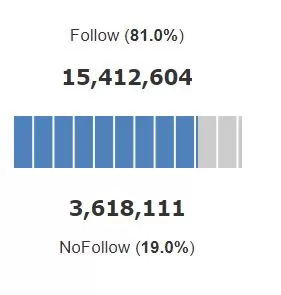The Ultimate List of the Best 10 Digital PR Agencies in the UK and US (2025)
Digital PR

Links are at the core of digital PR; they are the reason we do what we do. Digital PR campaigns are meant to promote a brand, create visibility, and attract backlinks from authoritative websites. But there is the much dreaded nofollow: But is it necessarily bad?
Every website has nofollow links in their backlink profile. If there is one without this type of backlink, it screams manipulation. If we look at some UK and US publications, we see that it is perfectly normal to have a certain ratio of nofollow links in the backlink profile (screenshots taken from Majestic.com on 03/09/2020):
| BBC.com | theGuardian.com | theSun.co.uk | Inc.com |
 |
 |
 |
 |
This is what we would call “natural”. Any healthy backlink profile that has naturally grown over time without paid link building, will have both, follow and nofollow links.
A link in content can always be seen as a reference or a vote. If a writer links to another website without being asked for it, he or she does so because the other website provides value to the reader. The link becomes a trust-worthy reference to a useful resource. Google’s algorithm is based on these trust signals. Crawlers follow these links and discover more and more pages on the web through links. If that link comes from an authoritative website (e.g. an established news site), it has positive impact on the ranking.
Google introduced the rel=”nofollow” as an attribute for HTML links in 2005 to add to comment spam and user-generated content (UGC). It was meant to prevent the abuse of this type of content for unnatural link building. It was an indication to Google’s crawlers to neither use those links for crawling (the crawler does not follow the link) nor as a ranking signal.
Paid and sponsored links too were from then on required to add a nofollow attribute.
But the internet is changing. A few years later, websites like Forbes and Wikipedia made all outbound links on their website by default nofollow. That might have been a preventive measure to ensure accordance with Google’s guidelines or was meant to discourage digital PRs and link builders to reach out to their journalists and contributors requesting a link.
That was not what Google’s engineers had in mind when they introduced the nofollow attribute and it had an impact on the link graph. Google had to make a change again.
About a year ago, in September 2019, Google introduced two new link attributes to make a further distinction. User-generated content should be marked as rel=”ugc”, paid links as rel=”sponsored”. Links that contained these attributes. The nofollow attribute was from then on, a catch all for all other kinds of not-trusted links. All three attributes would be ignored for crawling but might be seen by Google’s algorithm as a “hint” for ranking.
Already at that time, Google announced a further update for March 2020. From that point onwards, this type of link would also be treated as a “hint” for crawling. This is from the Google webmaster guidelines:
The fact that the nofollow attribute is still acceptable for paid links and that Google did not require any changes to previously published content, places some question marks to these changes. It brings us back to the question how Google recognizes a paid link in the first place. So far, it has not had an impact on websites like Forbes to change their policy around outbound links, they are still nofollow by default.
How much impact a nofollow attribute really has on the ranking impact of a link is still unanswered, maybe there was never really a difference in the first place. What matters though is that a backlink profile looks natural and that includes all types of links.